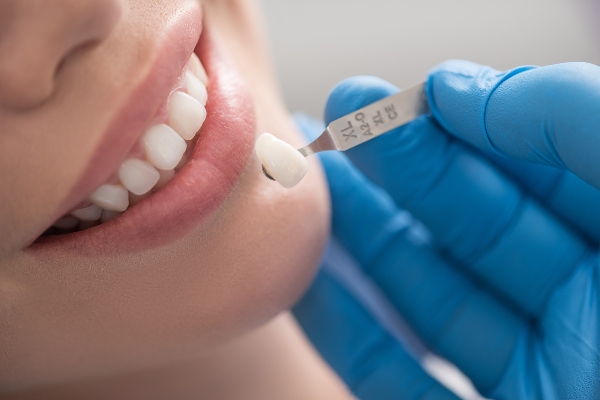3 FAQs About Restorative Dentistry

If you are wondering about restorative dentistry, you are not alone. Lots of people have similar questions about the subject of restorative dental procedures. When people ask a question several times, it becomes a frequently asked question or FAQ. Dental professionals answer patients’ questions on a public forum (like a website). That makes it easier for everyone to see. That way, patients do not have to ask the same restorative dentistry question again.
Three common questions
Several questions come up frequently about dental restoration. It is a term that inspires skepticism among patients. As one learns more about restoration, the person will begin to feel less out of touch and more informed. It will become easier to decide about one’s dental health. It will even enlighten an individual about procedures the person has had in the past. To begin, check out three of the most frequently asked questions about the subject.
1. What is restorative dentistry?
The most common question is what restorative dentistry is. The term sounds complicated, but it is quite simple. Dental restoration refers to the improvement or replacement of missing or damaged teeth. There is more than one procedure used to restore a tooth. Each one falls under the umbrella of restorative dentistry. Dentists use a wide variety of restorative techniques to complete the procedures.
2. What are the common restorative treatments?
Once people know the definition for restorative dentistry, the goal becomes to understand what it means in practice. As a result, a common question is, what are the treatments? Patients who have received a crown or filling have already had restoration work done. The type of treatment a dentist performs will depend on the severity of the conditions for the specific patient. Common treatments include bridges, crowns, dental implants, and fillings.
3. What are the benefits of restorative dentistry?
Understanding the benefits of restorative dentistry helps make the decision more practical. For this reason, it is another frequently asked question. Patients want to know the primary advantages of a treatment before investing money in it. It is vital that everyone considers the source. Online information can sometimes be misleading or factually incorrect.
The benefits of restoration are wide-ranging. They are considered positive for dental health by most professionals. Just like with any dental issue, the quality of the dentist will determine the value of the procedure. A reputable professional will perform better than someone who has a poor reputation. Here are some primary benefits:
- Enhanced appearance
- Improved functionality (chewing, talking, etc.)
- Oral hygiene
- Symptom relief
Possible procedures before restoring teeth
While some people can get restorative dentistry procedures right away, others must wait a while. These patients may have oral issues that can affect some restorations in a negative way. The dentist must perform specific procedures first so that the restoration can function well. The patient should prepare for at least one procedure. Below are some of the pre-restoration procedures a patient might get:
- Alveoloplasty reshapes the jawbone. The aim is to remove the ridges before making new dentures. The alveolus is a jawbone structure that surrounds dental roots. It can form ridges when teeth are lost or extracted. Alveoloplasty removes these ridges in preparation for restorative dentistry.
- Crown lengthening removes the excess gum tissue. It then exposes more dental surfaces. A person with a gummy smile or small teeth can get this procedure. Crown lengthening can help dental restorations fit better.
- Tori removal is a procedure that smoothens the tori before restorative dentistry treatments. A torus is a form of an oral bump. It can block dental restoration in some patients. This growth may be a result of heredity or teeth grinding. It is benign, but it may prevent dental restorations from functioning the right way.
- Sinus lift raises the floor of the sinus for the upper jaw. This will make room for dental implants and bone grafting. This procedure can lead to the success of a dental implant in the upper jaw.
- Bone grafting may be necessary for patients with a thin jawbone. It is a good way to prepare for dental implant surgery. This procedure aims to thicken parts of the jawbone. These areas can then support the implants enough to fuse them to the jawbone.
Consulting with a dental professional
You can only learn so much about restorative dentistry online. The most impactful knowledge comes from qualified dental professionals who can give you one-on-one consultation. Then the dentists will apply the concepts to your needs. Some patients suffer from more severe conditions. Others are looking to address mild to moderate discomfort. Your local dentist can give insights about each procedure and discuss expenses.
Request an appointment here: https://www.tanqueverdedental.com or call Oro Valley Family Dentistry at (520) 833-5261 for an appointment in our Tucson office.
Check out what others are saying about our dental services on Yelp: Restorative Dentistry in Tucson, AZ.
Related Posts
Restorative dentistry is the process of restoring damaged or missing teeth. You have had a form of dental restoration if you have ever had bridges, crowns, or fillings. Dentists want to improve or maintain your smile while preventing future dental complications. Restorative procedures need care and attention to detail. Therefore, only qualified dental professionals should…
The goal of restorative dentistry is to repair a smile that is damaged to achieve optimal oral health, appearance, and function. This review discusses restorative dentistry and highlights the various services that this branch of dentistry includes.Learning more about the benefits of restorative dental services can help you determine how a restorative dentistry visit can…
A smile makeover can enhance the way your gums and teeth look. This process could even improve the function of your mouth. One of the treatments in this procedure is gum contouring. If you want to know what gum contouring does for your smile makeover, here are the details.There are cases when the gums need…
When teeth become damaged, stained, or unsightly, a smile makeover can help you enjoy a beautifully restored smile. Many treatments improve not only the appearance of teeth but their function as well. It is important to have damaged teeth repaired promptly to avoid unwanted side effects, such as decay, infection, or tooth loss.There are many…


